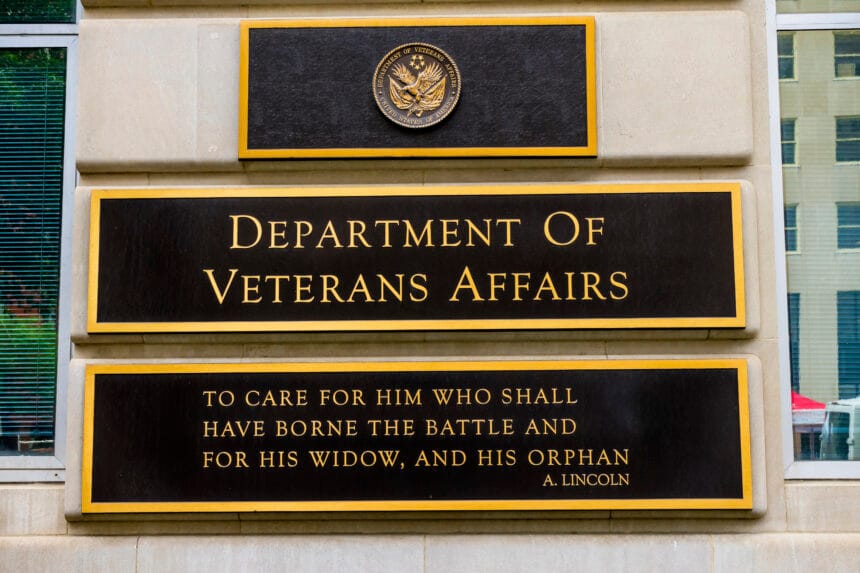Veterans have a high rate of health problems. An estimated 30% of veterans under 64 years old report having multiple chronic health problems.
Veterans may want to seriously consider getting all the health services that they can qualify for. The VA is usually one of the first places they can go. Unfortunately, it can tricky trying to navigate the process of getting care through the VA. This can a problem for aging seniors and veterans with disabilities.
A decade ago, we published an article mentioning that the VA had an influx of 1.5 million people over the past three years. Unfortunately, we have had an even harder time assisting them since.
It might be difficult to navigate the Veterans Affairs (VA) disability claims process. The Veteran’s Affairs website has some suggestions, but it can be hard to figure it out. This is especially true for those affected by aqueous film-forming firefighting foam exposure. For many veterans, this journey is deeply personal and emotionally charged.
After years of dedicated service, they now face health challenges linked to their time protecting others. The foam that once helped them save lives may now be fatal for their own.
After submitting your claim and enduring an often anxiety-filled waiting period, receiving the VA’s decision is a crucial moment. It’s more than just paperwork. It’s a decision that can significantly impact your life and future.
This article aims to demystify VA decisions, helping you interpret the results and determine your path forward.
Types of VA Decisions
The VA issues several types of decisions following a claim review. Approval signifies that your claim has been accepted, leading to the awarding of benefits. Conversely, a denial indicates that the VA has rejected your claim based on the evidence provided.
TorHoerman Law states that in some cases, the VA may request additional information or seek further documentation to support your claim. For example, in the case of aqueous film-forming foams (AFFF), the symptoms in veterans can take decades to surface. So, cementing the causal relationship between the disease and real toxin exposure can be difficult.
Here, VA claims for exposure to AFFF might require a more robust trail of medical evidence and exposure proof. Moving on, partial approval occurs when the VA accepts some aspects of your claim while rejecting others. This could result in a lower disability rating than expected.
Lastly, a deferred decision means the VA needs more time to evaluate your claim. This is often due to complex medical evidence or the need for additional examinations.
Understanding these decision types is crucial for determining your next steps. An approval may require you to review the awarded benefits, while a denial or partial approval might necessitate an appeal. For requests for additional information or deferred decisions, prompt and thorough responses are essential to move your claim forward.
Anatomy of a VA Decision Letter
VA decision letters follow a structured format, providing critical information about your claim’s outcome. The letter typically begins with an overview of the decision, followed by detailed explanations. You can visit the VA website for details.
Key components include:
- Identifying Information: Your name, claim number, and filing date.
- Decision Summary: A brief statement of approval, denial, or other outcomes.
- Disability Rating: If approved, your overall combined disability rating is expressed as a percentage.
- Effective Date: The date from which your benefits will be calculated.
- Reasons for Decision: Detailed explanations for each claimed condition.
- Evidence List: An inventory of all documents considered in the decision.
- Next Steps: Information on appealing the decision or submitting additional evidence.
You must pay close attention to the disability rating, as it determines your compensation level. The effective date is also vital, as it impacts potential retroactive payments. If denied, focus on the reasons provided to guide your appeal strategy.
Dual Compensation Mechanisms
Veterans impacted by Aqueous Film-Forming Foam (AFFF) exposure have access to two distinct compensation channels, each operating under separate legal frameworks.
VA Disability Compensation
The U.S. Department of Veterans Affairs (VA) administers a service-connected disability program for AFFF-related health conditions. This system operates under 38 U.S.C. § 1110 and 38 C.F.R. § 3.303, which govern the establishment of service connections for disabilities.
The VA utilizes a rating schedule (38 C.F.R. Part 4) to determine compensation levels based on the severity of the condition. These payments are non-taxable and dispensed monthly.
Mass Tort Litigation
Concurrently, affected veterans may pursue legal action against AFFF manufacturers through the civil court system. These cases typically fall under the purview of product liability law, specifically failure to warn.
The litigation is often consolidated into Multi-District Litigation (MDL) under 28 U.S.C. § 1407 to streamline pretrial proceedings.
Key Considerations:
- Causation Standards: VA claims require an “at least as likely as not” standard (38 C.F.R. § 3.102). Tort litigation, on the other hand, typically demands a “more likely than not” threshold.
- Statute of Limitations: VA claims are not time-barred, whereas tort actions must adhere to state-specific statutes of limitations.
- Burden of Proof: In VA claims, there’s a duty to assist the veteran (38 U.S.C. § 5103A), while in tort litigation, the plaintiff bears the evidentiary burden.
These mechanisms are not mutually exclusive. As a veteran, you can pursue both avenues without offset. This dual approach allows for comprehensive compensation addressing ongoing disability and punitive damages for past exposure.
FAQs
Q. How can I determine which conditions are eligible for VA disability compensation?
The eligibility of AFFF-related health conditions for VA disability compensation depends on the specific criteria established by the VA. It is important to consult with a VA medical professional or a legal professional. They can review your medical records and guide the specific evidence required to support your claim.
2. Can I appeal a VA decision if I disagree with the disability rating assigned to my AFFF-related conditions?
Yes, you can appeal a VA decision if you believe the disability rating assigned to your AFFF-related conditions is too low. The appeals process involves submitting additional evidence or requesting a review of your case by a higher authority within the VA. It is important to consult a legal professional who can guide you through the appeals process and help you build a strong case.
3. How long does it typically take to receive a decision on my VA disability claim for AFFF exposure?
The VA disability claim processing time varies depending on the complexity of the case as well as the availability of necessary evidence. However, it is important to note that the VA has experienced significant backlogs in recent years. It is advisable to be patient and persistent throughout the claims process. Seek legal assistance if you have concerns about the progress of your claim.
In conclusion, decoding VA decisions for AFFF exposure claims requires more than just understanding the paperwork. It’s about navigating a complex system while dealing with profound health impacts.
By comprehending the nuances of decision types, letter components, and dual compensation mechanisms, veterans can better advocate for their rights. This knowledge can empower you to make informed choices, whether pursuing appeals or exploring additional legal avenues.










